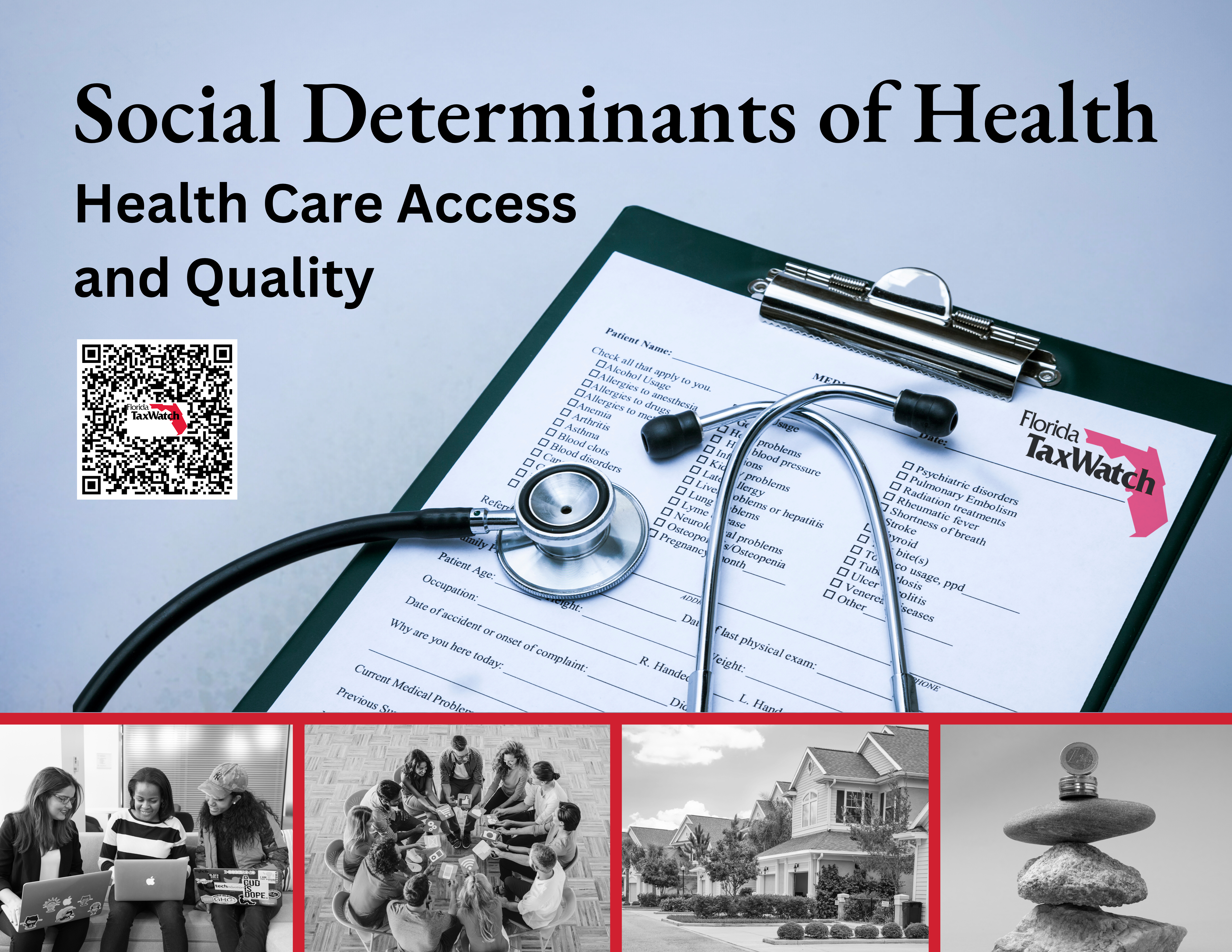Social Determinants of Health: Health Care Access and Quality
 The report delves into the social determinants of health (SDOH), which are environmental conditions affecting individual health outcomes. It identifies five primary groups: Health Care Access and Quality, Education Access and Quality, Social and Community Context, Neighborhood and Built Environment, and Economic Stability. SDOH accounts for about 80% of a person's health, overshadowing the impact of direct medical care.
The report delves into the social determinants of health (SDOH), which are environmental conditions affecting individual health outcomes. It identifies five primary groups: Health Care Access and Quality, Education Access and Quality, Social and Community Context, Neighborhood and Built Environment, and Economic Stability. SDOH accounts for about 80% of a person's health, overshadowing the impact of direct medical care.
The focus is on Health Care Access and Quality in Florida, revealing significant challenges due to high insurance costs and a substantial uninsured population. In 2021, Florida ranked 41st in health care access nationally. The state struggles with a physician shortage, particularly in rural areas, and faces ongoing issues with health disparities influenced by social, cultural, economic, and geographic barriers. These disparities were notably evident during the COVID-19 pandemic.
A lack of health insurance is a primary driver of health disparities. As of 2023, a significant portion of Floridians lack employer-sponsored health insurance, and the state has a higher rate of uninsured residents compared to the national average. This situation results in delayed medical care and inadequate preventive measures.
Economically, the uninsured impose substantial costs on healthcare systems, relying heavily on emergency departments. Financial losses affect not only hospitals but also government budgets, with billions spent annually on uncompensated care costs.
Promoting telehealth services, expanding scope of practice for physician assistants and nurses, and implementing policy changes such as the "Live Healthy Agenda" are recommended to address the health care access crisis and support Florida's growing population.
This commentary is part of a series by Florida TaxWatch, with further reports on other SDOH aspects forthcoming, aiming to culminate in a comprehensive report in Fall 2024.